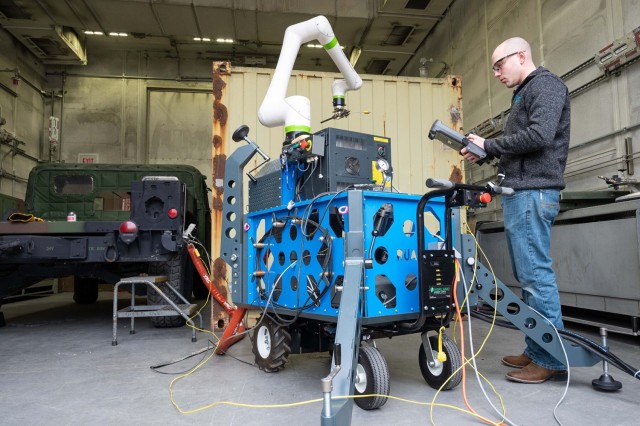
Participants from the U.S. Department of Defense (DOD), private industry, and academia met earlier this month at Letterkenny Army Depot in Chambersburg to demonstrate the latest cold spray technology applications.
Cold spray is a method of corrosion mitigation and is used to repair different materials.
LEAD, the Air and Missile Defense and Long Range Precision Fires depot, a subordinate of U.S. Army Aviation and Missile Command, has integrated cold spray to mitigate corrosion on Army systems over the past year. Its engineers seek additional ways to use the technology.
LEAD saved more than 12 months in repair time and more than $750,000 in costs by utilizing cold spray repairs on a High Mobility Artillery Rocket System roof.
“Cold spray isn’t a kind of pie-in-the-sky idea,” Michael Nicholas, Northeast additive manufacturing lead, Army Research Laboratory, U.S. Army Combat Capabilities Development Command, said. “It’s actually something which is being used readily in the DOD. (Cold spray) started with an idea, and it has grown into a viable solution for the DOD to help us keep our aging weapon systems in the fight longer. It includes industry, academia, national labs, different R&D (research and development) centers, international partners, and it runs all the way from physics, modeling, and simulation all the way through application and development systems. Today we’re going to see those systems which have been developed for applying cold spray at the point of view.”
The demonstration took place in the depot’s cold spray booth. Mobile technology was utilized through robotics and a hand spray application to showcase the system’s versatility.
The mobile unit is comprised of two trailers and is equipped with a dust collector to mitigate localized overspray. One trailer is for a generator. The second trailer is for gas compression and storage. It contains a maneuverable cart that allows the robotic arm, cold spray machine, and spraying equipment to be wheeled in close proximity to an object for repair.
The purpose of the demonstration was to inform attendees about mobile units and allow collaboration and best-practice sharing.